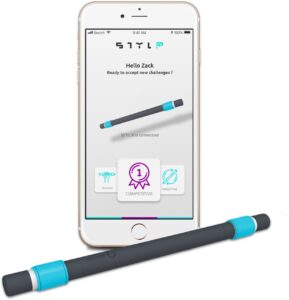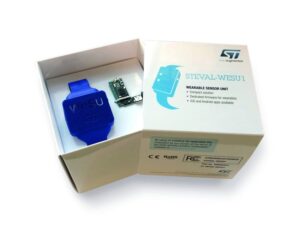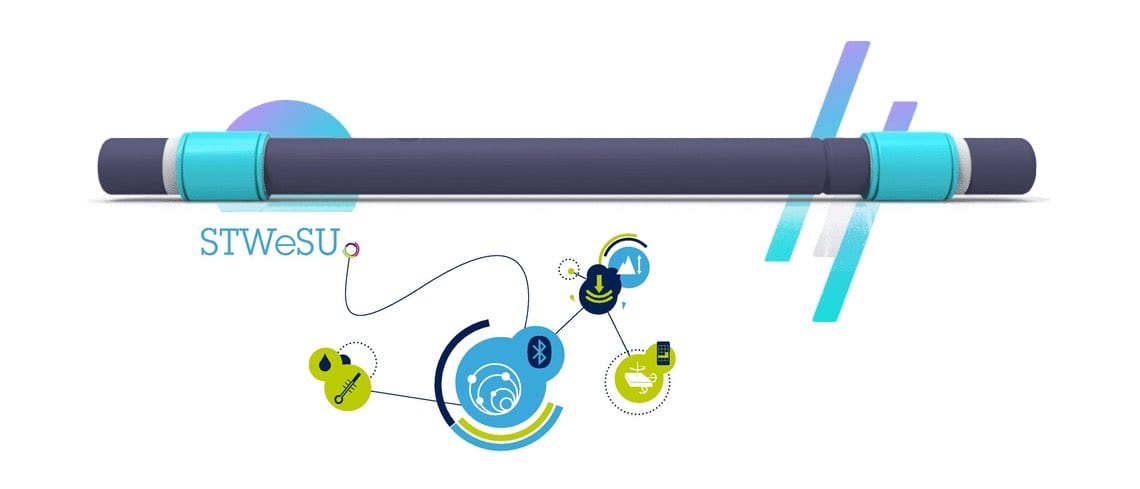The ST wearable sensor reference design (STEVAL-WESU1) has a wide range of applications, including one that few had thought of: pen spinning, also called pen mawashi! Meet STYL (Smart Technology You Love), a French company that makes a connected pen that drew inspiration from the WESU to offer precise inertial tracking and a fun mobile application to monitor progress and to help pen spinners improve their performance.
STYL is part of the Founders Program at Station F, the biggest incubator at the heart of Paris. The company is preparing a crowdfunding campaign to introduce its device to the world. In the meantime, it’s been demoing its prototype and had a booth at Embedded World 2018, which is why we decided to catch up with its teams before their big launch to dive deeper into the technologies and the stories that make this pen so unique.
Popular in Japan since the 1970s, pen spinning is widely popular in Asia, the United States, and Europe, especially among students that wished they were studying ST technologies rather than the boring classes that are making them fall asleep. Jokes aside, STYL’s product is unique because it is bringing connected technologies to this growing sport, which in itself is highly symbolic since the Internet continues to play a big role the popularity of pen spinning among young adults. However, bringing IoT to a pen is far from easy. The product must be ergonomic, thin, and light to ensure spinners can perform their various acrobatics, and the sensors must be accurate and fast enough to offer pertinent information. All these factors and others explain why designing STYL was so challenging.
WESU To the Rescue

STYL’s story is fascinating because the company first tried to design their own custom system from scratch. However, after multiple attempts and rising difficulties, one of their industry partners recommended they use the WESU reference design for their platform. As Barbara Morin, CEO and Founder at STYL explained:
“We first set out to simply learn from the WESU reference design, but ended up using its STM32L151 microcontroller (MCU), its LSM6DS3 accelerometer and gyroscope, its LIS3MDL three-axis magnetometer, and the BlueNRG-MS Bluetooth LE network processor.”The latter was particularly important because the Bluetooth antenna on some of the first prototypes ended up touching part of the IC, which caused severe issues that were particularly hard to diagnose. Indeed, the system appeared to be sending information, but the smartphone application didn’t actually get it. Ultimately, this design flaw caused the team to delay their product by multiple months, which highlights the importance of a reliable and trustworthy foundation.
The advantage of a reference design like the WESU is that it offers the ability to customize the final PCB while using a solid starting point for engineering teams. Now that STYL moved to their final design and custom PCB, they only use the parts of the WESU that makes the most sense for their application. As a result, they were able to fit our sensors and Bluetooth module into a tiny product while avoiding significant design hurdles that could have slowed their time to market.
Precision and Performance Thanks to Experimentation

The WESU fosters experimentations because it is part of the ST ecosystem. As Barbara told us, her team first thought it might need an MCU with a larger memory capacity than the one present in the reference design. As a result, they used STM32CubeMX to generate new header files as they switched between models. It allowed them to try various STM32L1s with minimal changes to their code, making the prototyping phase a breeze. What’s even more interesting is that the team finally settled back on the STM32L151 present in the WESU. However, the flexibility of easily trying multiple microcontrollers helped the organization ensure that it was choosing a component because it was the most pertinent for their design, rather than because they were bound by monetary or time constraints.
The company also tried sensors from many different vendors, but Barbara shared with us an exciting experience:
“Before getting the WESU, we tried a lot of different sensors and ran so many different benchmarks and comparisons to find the best solution. After getting our hands on the ST reference design, we found that it wasn’t only an easier solution but that the entire platform communicates better with all its components. It was thus a strategic choice because it offered an amazing level of performance and the perfect size for our application.”Additionally, STYL also used some of our libraries to more quickly develop their custom algorithms. This story thus stresses the importance of having a company like ST control the entire ecosystem, from the MCU to the sensors and the software layer. It shows that one unified solution offers so many more possibilities than a disparate association of components.
STYL: The Journey
The story behind the STYL connected pen is also amazing because this project that often targets pen spinners that learned their passion in classrooms started itself as a school project by engineering students attending École 42, a tuition-free ans non-profit institution, Some of the students behind the first prototype got so excited about their idea’s potential that they continued to pursue it after the coursework was over.
However, one lesson that Barbara shared with us was that even though hardware is a hard business, STYL was able to prototype much faster thanks to the WESU. As long as teams get their hands on the right platforms and reference design, it becomes a lot easier to customize and tweak PCBs to fit an application. It also allows teams to be closer to their customers. By spending less time on developments, they can focus more on the user experience and the features that will make a product genuinely great.
STYL will be demoing its pen and mobile application at CES 2019. You can find them at the Eureka Park at booth 51109, as part of the Augmented Reality and Virtual Reality initiatives.
- Learn more about STYL
- Check out our WESU Reference Design
